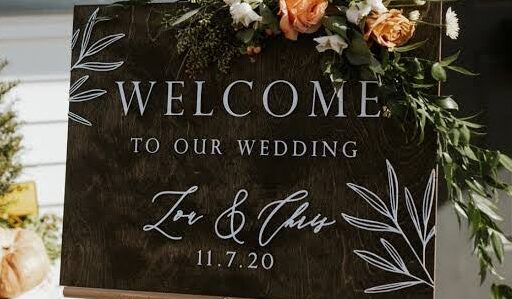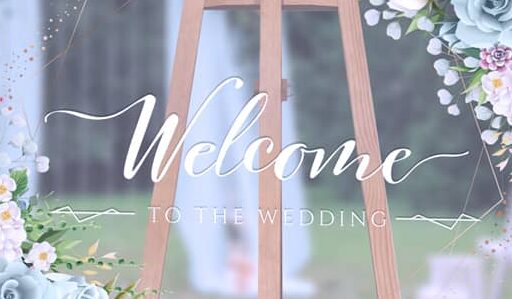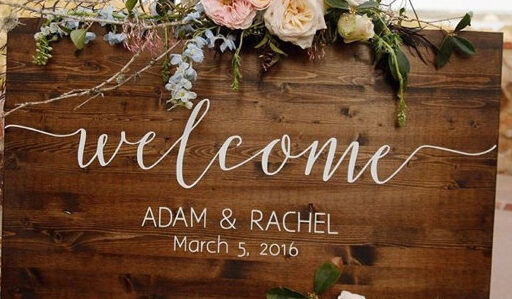Introduction
Wedding signage plays a pivotal role in guiding, informing, and adding a personal touch to your event. From welcoming guests to providing directions and setting the tone, well-designed signs can greatly enhance the overall experience. Here’s how wedding signage contributes to effective event planning and why it’s worth considering every detail.

1. Welcoming guests
The first impression sets the tone for the event. A welcome sign at the entrance of your wedding venue immediately greets guests and lets them know they’ve arrived at the right place. This sign can be both functional and decorative, incorporating your wedding theme or colours to create a warm and inviting atmosphere.
2. Providing Directions
Weddings often involve multiple areas—ceremony space, reception area, restrooms, and more. Clear directional signs ensure guests can navigate the venue with ease. For larger or more complex venues, directional signs help avoid confusion and keep everyone on the right path.
3. Informing Guests
Signage can provide essential information, such as the schedule of events, seating arrangements, or instructions for specific activities. For instance, a sign detailing the order of the ceremony, timing for the reception, or instructions for photo booths helps keep everyone informed and ensures a smooth flow of events.
4. Personalising the Experience
Custom signage adds a unique and personal touch to your wedding. Signs that reflect your personalities, such as favourite quotes, custom hashtags, or messages of gratitude, enhance the overall theme and make the event feel more intimate. This personal touch also creates memorable photo opportunities for guests.

5. Managing Logistics
Effective signage can streamline logistics by providing information on guest services, such as where to find the guest book, where to drop off gifts, or where to get a drink. This helps manage the flow of guests and ensures that everyone knows where to go and what to do.
6. Enhancing the Aesthetic
Signage is an integral part of your wedding decor. From elegant calligraphy to modern designs, signs can complement your wedding theme and colour scheme. Creative and stylish signs contribute to the overall ambiance and can be used to reinforce the visual appeal of the event.
7. Setting the Tone
The design and messaging of your signage can help set the mood for different parts of your wedding. For example, a rustic wooden sign might fit a country-themed wedding, while a sleek, modern sign might be more appropriate for a contemporary celebration. Signs help convey the atmosphere and theme of your event.
Types of Wedding Signage to Consider
- Welcome signs: greet guests at the entrance.
- Directional Signs: Guide guests to different areas of the venue.
- Menu Signs: Display meal options for the reception.
- Seating Charts: Help guests find their assigned tables.
- Bar Signs: Inform guests about drink options or special cocktail menus.
- Photo Booth Signs: Encourage guests to use the photo booth and share photos with a hashtag.
- Thank You Signs: Express gratitude to guests for their attendance and support.

Tips for Effective Wedding Signage
- Consistency: Ensure that your signage style is consistent with your overall wedding theme and decor.
- Readability: Choose fonts and sizes that are easily readable from a distance.
- Materials: Use high-quality materials that withstand various weather conditions if your event is outdoors.
- Placement: Position signs strategically where they are most needed—at entry points, along paths, and in key areas.
Ready to find your perfect match?
Join our community to start your journey towards love and companionship!

Conclusion
In summary, wedding signage is more than just a practical tool; it’s an opportunity to enhance your event’s experience and aesthetics. Thoughtfully designed signs help guide, inform, and delight your guests, contributing to a smooth and memorable celebration. Incorporate signage into your planning to ensure a seamless and personalised wedding day.

